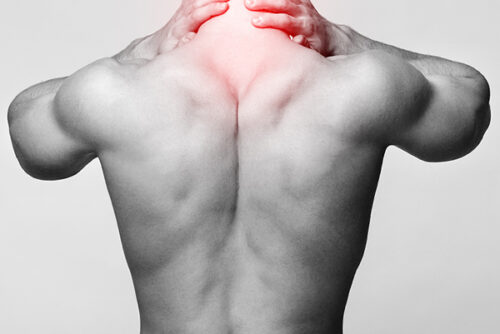Pain Conditions
Carpal Tunnel Syndrome
What is carpal tunnel syndrome (CTS)?
CTS is caused by pressure on the median nerve within the carpal tunnel located on the palm side of the wrist.
What are the symptoms of CTS?
Pain, numbness and tingling sensation affecting the thumb, index finger, middle finger and ring finger. The little finger is usually unaffected.
Weakness in the hand and fingers leading to inability to hold a cup or chopsticks.
How is CTS treated?
Work or lifestyle modification, rest, wrist splint and anti-inflammatory medications are the first line treatment.
Steroid injections can also give temporary relief by reducing swelling and inflammation.
Surgery is needed for those with persistent pain and numbness despite conservative management.
Chronic Pancreatitis
What is chronic pancreatitis?
Chronic pancreatitis is due to repeated inflammation of the pancreas. It leads to permanent pancreatic damage and loss of function.
Excessive alcohol use, smoking, diabetes and obesity are the risk factors for developing pancreatitis.
What are the symptoms of chronic pancreatitis?
Constant abdominal pain with recurrent episodes of severe pain. Associated symptoms include back pain, vomiting, diarrhoea and loss of weight.
How can the pain from chronic pancreatitis be treated?
Pain medication is usually needed to manage the severe pain. Avoiding smoking and drinking alcohol is important to reduce the acute flares.
Administering nerve blocks e.g. coeliac plexus or splanchnic nerve blocks may help to control severe and persistent pain.
Patients with unremitting pain may benefit from spinal cord stimulation. This is an advanced therapy to modulate the nerves that are carrying pain signals from the pancreas.
Chronic Prostatitis
What is chronic prostatitis?
Chronic prostatitis is the inflammation of the prostate that persists for more than 3 months. It can occur after an urinary tract infection or bacterial prostatitis. In other situations, no bacteria is found and the condition develops into chronic pelvic pain syndrome.
What are the symptoms of chronic prostatitis?
Pain around the lower abdomen, buttock, anus, penis, and testicles. You may also experience pain when urinating, an urgent need to urinate or urinating many times a day. Sexual dysfunction including painful ejaculation is also common.
How can the pain from chronic prostatitis be treated?
Chronic bacterial prostatitis will require a long-term course of antibiotics. Pain medication, muscles relaxants etc. can help manage the pain.
A hypogastric sympathetic plexus block under X-ray guidance is sometimes administered to
help reduce the pain.
Interstitial Cystitis (Painful Bladder Syndrome)
What is interstitial cystitis?
Interstitial cystitis is a painful bladder condition of unknown cause. There is usually a sensation of pain and pressure in the bladder region.
What are the symptoms of interstitial cystitis?
Urgency to urinate, frequent urination, or pain when the bladder is full.
In women, other symptoms include pain in the pelvis, vagina and anus; in men, other symptoms include pain in the pelvis, scrotum and anus.
How can the pain from interstitial cystitis be treated?
Your urologist may recommend Botulinum toxin injection into the bladder wall, or instillation of dimethyl sulfoxide into the bladder. Pain medications are frequently used to reduce pain.
Administering nerve blocks e.g. hypogastric plexus block can be helpful. Severe and persistent pain from interstitial cystitis may also benefit from sacral nerve stimulation.
Chronic Pelvic Pain Syndrome
What is chronic pelvic pain syndrome (CPPS)?
CPPS is a difficult condition to diagnose because there is no obvious ongoing disease process. It may be associated with chronic prostatitis, interstitial cystitis, endometriosis, vulva pain, anal pain or even irritable bowel syndrome.
Patients frequently present with concurrent depression, anxiety or emotional distress.
What are the symptoms of CPPS?
Constant abdominal or pelvic pain with urinary symptoms (frequency, urgency, pain on urinating), bowel symptoms (diarrhoea, cramps) or sexual dysfunction (pain on intercourse, ejaculation).
How can CPPS be treated?
A combination approach involving physiotherapy, psychotherapy, and pain medications is very important as there is usually no complete cure to this condition.
Severe CPPS may benefit from neuromodulation, i.e. sacral nerve stimulation.
Complex Regional Pain Syndrome
What is complex regional pain syndrome?
Complex regional pain syndrome (CRPS) is an uncommon chronic pain condition usually affecting the arm or the leg. It can develop after a minor injury (e.g. ankle sprain), fracture or surgery to the limb. The pain is out of proportion to the initial injury.
What are the symptoms of CRPS?
Pain, hypersensitivity to touch, swelling, abnormal sweating, warmth or coldness in the affected arm or leg. There may also be hair, skin and nail changes, muscle loss, muscle weakness and tremors.
How is CRPS treated?
Treatment needs to be initiated as soon as possible to ensure a good outcome. Antidepressants, anticonvulsants, and local anaesthetic plasters are used to control pain.
Severe CRPS may even require sympathetic nerve blocks, intravenous ketamine infusion or spinal cord stimulation to relieve the pain.
Physiotherapy, occupational therapy and exercises have to complement medical treatment to restore function and mobility of the affected limb.



![pain-conditions-back[1] pain-conditions-back[1]](https://thepainclinic.com.sg/wp-content/uploads/2022/11/pain-conditions-back1-500x334.jpg)
![pain-conditions-joint[1] pain-conditions-joint[1]](https://thepainclinic.com.sg/wp-content/uploads/2022/11/pain-conditions-joint1-500x334.jpg)
![pain-conditions-shingles[1] pain-conditions-shingles[1]](https://thepainclinic.com.sg/wp-content/uploads/2022/11/pain-conditions-shingles1-500x334.jpg)
![pain-conditions-trigeminal[1] pain-conditions-trigeminal[1]](https://thepainclinic.com.sg/wp-content/uploads/2022/11/pain-conditions-trigeminal1-500x334.jpg)
![pain-conditions-head[1] pain-conditions-head[1]](https://thepainclinic.com.sg/wp-content/uploads/2022/11/pain-conditions-head1-500x334.jpg)
![pain-conditions-neuro[1] pain-conditions-neuro[1]](https://thepainclinic.com.sg/wp-content/uploads/2022/11/pain-conditions-neuro1-500x334.jpg)
![pain-conditions-myofascial[1] pain-conditions-myofascial[1]](https://thepainclinic.com.sg/wp-content/uploads/2022/11/pain-conditions-myofascial1-500x334.jpg)
![pain-conditions-fibromyalgia[1] pain-conditions-fibromyalgia[1]](https://thepainclinic.com.sg/wp-content/uploads/2022/11/pain-conditions-fibromyalgia1-500x334.jpg)
